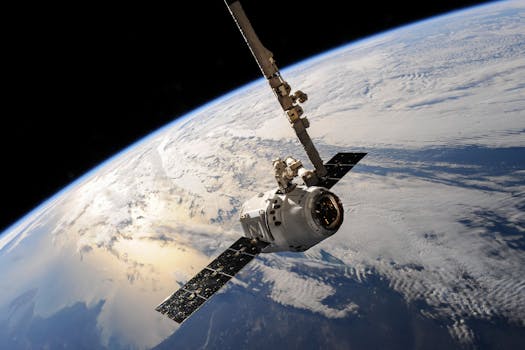The Future of Satellites: Revolutionizing Global Connectivity
The future of satellites is poised to revolutionize global connectivity, enabling faster and more reliable communication networks. With advancements in space technology, satellites are becoming increasingly important for a wide range of applications, from navigation and communication to weather forecasting and Earth observation.

The Future of Satellites: Revolutionizing Global Connectivity
The future of satellites is poised to revolutionize global connectivity, enabling faster and more reliable communication networks. With advancements in space technology, satellites are becoming increasingly important for a wide range of applications, from navigation and communication to weather forecasting and Earth observation. As the demand for satellite-based services continues to grow, the industry is expected to witness significant advancements in the coming years.
Advancements in Satellite Technology
One of the key drivers of the satellite industry’s growth is the rapid advancement in technology. Satellites are becoming smaller, lighter, and more powerful, enabling them to perform a wide range of tasks with greater efficiency. The development of new materials and manufacturing techniques has also led to a significant reduction in the cost of building and launching satellites. This has made it possible for companies and organizations to launch constellations of satellites, enabling global coverage and connectivity.
Low Earth Orbit (LEO) Satellites
Low Earth Orbit (LEO) satellites are becoming increasingly popular due to their ability to provide high-speed, low-latency communication services. LEO satellites orbit the Earth at an altitude of around 160 to 2,000 kilometers, which enables them to provide faster and more reliable communication services compared to traditional geostationary satellites. Companies such as SpaceX, OneWeb, and Amazon’s Kuiper Systems are launching constellations of LEO satellites to provide global internet connectivity, navigation, and other services.
5G and Satellite Connectivity
The integration of 5G and satellite connectivity is expected to revolutionize the way we communicate and access data. 5G networks will enable faster data transfer rates, lower latency, and greater connectivity, making it possible to support a wide range of applications, from IoT devices to autonomous vehicles. Satellites will play a critical role in providing backhaul connectivity for 5G networks, enabling the extension of 5G services to remote and underserved areas.
Earth Observation and Remote Sensing
Satellites are also playing a crucial role in Earth observation and remote sensing, enabling us to monitor the health of our planet and track changes in the environment. Satellites such as NASA’s Landsat and the European Space Agency’s Sentinel-2 provide high-resolution images of the Earth’s surface, enabling us to track deforestation, monitor ocean health, and predict natural disasters. The use of satellite data is also becoming increasingly important for precision agriculture, enabling farmers to optimize crop yields and reduce waste.
Conclusion
In conclusion, the future of satellites is poised to revolutionize global connectivity, enabling faster and more reliable communication networks. With advancements in space technology, the development of LEO satellites, and the integration of 5G and satellite connectivity, the industry is expected to witness significant growth in the coming years. As the demand for satellite-based services continues to grow, it is essential to invest in the development of new technologies and infrastructure to support the industry’s growth.


